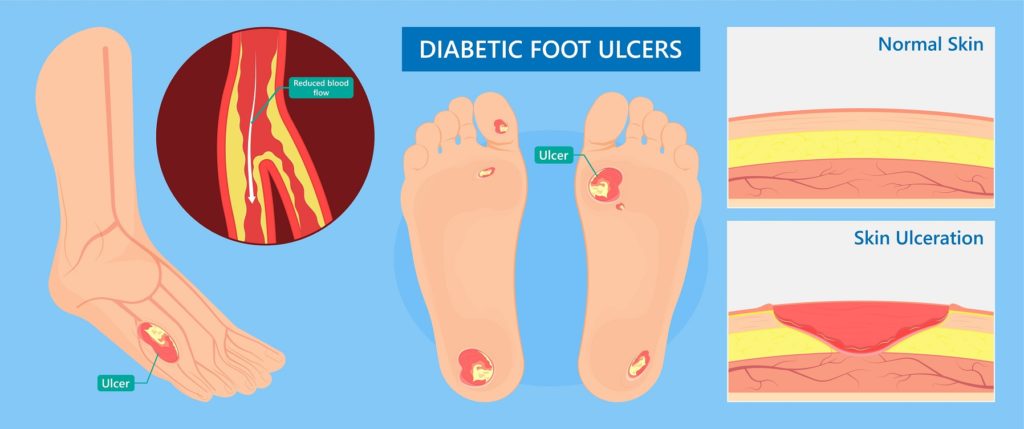What a Podiatrist Can Do For YOU!
Diabetic Foot Doctor [Foot Specialists & Diabetic Podiatrist Near Me]
Do you need a diabetic foot doctor or the best diabetic podiatrist near you? We have board-certified podiatrists & foot doctors for diabetes!

Best Diabetic Foot Doctor & Podiatrist Near Me:
If you need the answer to “who is the best diabetic foot doctor near me?” or “who is the best diabetic podiatrist near me?” We want to be the answer to that question.
See why we have the BEST reviews and have the best board-certified podiatrists for diabetes and diabetic foot problems!
Diabetic Foot Doctor & Podiatrist Treatment Tips Video:
The best diabetic foot doctor and podiatrists near me video summary:
🦶Do you have diabetes & diabetic foot pain? We go over the BEST Diabetic Foot Treatment: Manage Diabetic Foot Symptoms & Prevent Diabetic Foot Ulcers!🦶
0:00 Diabetic Foot Treatment
0:46 Diabetic Foot Podiatrist
1:00 Diabetic Foot Symptoms
1:15 Diabetic Foot Exam
1:35 Diabetic Foot Soaks
2:00 How to soak diabetic feet
2:25 Diabetic foot self-assessment at home
2:40 Diabetic Foot Infection
2:55 Diabetic foot socks
3:18 Diabetic foot shoes
3:50 Best Diabetic slippers
4:10 Best Diabetic Shoes
4:35 How to fit a diabetic shoe
4:50 Diabetic foot orthotics
5:05 Diabetes and poor blow flow
5:50 Diabetic foot nerve pain
6:21 Diabetic Foot Peripheral Neuropathy
6:35 Diabetic foot ulcer prevention
6:50 Diabetic foot home remedies and home diabetic foot prevention

Why is it important to see a podiatrist for your diabetic foot problems?
Research states that there is a foot amputation toe amputation loss due to diabetes every 20 seconds. When the patient has diabetes, they have a significantly greater risk of having foot problems and complications. Diabetes can lead to a lack of sensation called peripheral neuropathy, and poor blood flow called peripheral arterial disease.
Peripheral neuropathy is nerve damage that happens to the feet and the toes; this prevents most patients from having a good feeling in their toes and their feet, and that patient will lose the ability to feel over time. When an injury happens, such as a small cut or wound, he can frequently go unnoticed and lead to significant foot problems.
People with diabetes also suffer from peripheral arterial disease, leading to poor blood flow and slower healing of these diabetic wounds and ulcers.
Can a podiatrist help with diabetes?
Yes, the prime foot and ankle specialist podiatrists are board-certified and trained to deal with diabetes and diabetic peripheral neuropathy. Specifically, we are trained to deal with diabetic foot ulcers and work as part of the multidisciplinary team to assess your foot for health risks and develop treatment and prevention plans for diabetes.
Foot problems associated with diabetes:
The most common problems associated with diabetes are:
Diabetic foot ulcers:
A diabetic foot ulcer is a wound that can occur on the bottom of the toes, heel, or the bottom of the foot. Diabetic foot is much more likely to developing foot breakdown in this creates a non-healing open wound. These diabetic foot ulcers can gradually grow larger and become infected over time.
Treatment of diabetic foot ulcers can be very long and can be very expensive. Statistically, it is very likely to lead to hospitalization and infection, and possible amputations.
Diabetic peripheral neuropathy:
Diabetic purl full neuropathy means that with elevated blood sugars, over time, this can cause pain and eventually numbness in your toes, feet, and ankles. This can lead to more significant stress fractures, fractures, open wounds and injuries, and swelling. It is impossible to know whether there is an injury; it is a good idea to see a podiatrist make sure it does not worsen.
Charcot arthropathy of the foot:
When a patient with diabetic peripheral neuropathy develops nerves damage, this can cause weakening of the bones in the feet. The bones can then can and can fracture and result and foot deformities.
Diabetic foot amputations:
Having diabetes in the feet can lead to amputations of the big toe joint, amputations of the small toes, and a can lead to a forefoot amputation or a full leg amputation.
It is, unfortunately, something we encounter very commonly and has a high rate of development in the community. It is important to follow up with a podiatrist and ensure that this is not happening to you.
How often should a person with diabetes see a podiatrist?
Most health insurance plans and Medicare allow patients to see their podiatrist approximately every 62 days for diabetic foot care.
- This allows a podiatrist to treat diabetic callus treatment, diabetic foot corn treatment, and diabetic toenail fungus treatment.
- We recommend that high-risk patients be seen at least four times a year, and lower-risk patients can be seen approximately 1-2 times a year.
- We see many patients hospitalized for diabetic foot infections and other significant problems, and we always do our best to answer the phone immediately, take bacterial cultures, and be ready with home care evaluations in the southeastern Michigan region.
- If you are in southeastern Michigan, considering coming to see us for a no-obligation consultation for your diabetic foot pain. We also offer home care visits for your diabetic foot exam and evaluation.
How can a podiatrist help a person with diabetes?
Podiatrists are pivotal members of a diabetes treatment team. Our podiatrists are board-certified in foot and ankle reconstructive surgery, board-certified in foot and ankle care of diabetic problems such as corns and calluses, foot deformities, bunions hammertoes tightness, and joint pain.
Allow us to show you with an obligation consultation to see why we are the choice to help treat the diabetic foot problems of your loved ones.
See why we have the best reviews in the area with very happy patients.
Frequently Asked Diabetes Questions:
How often should people with diabetes see a podiatrist?
We frequently hear the question, “how often should diabetics see a podiatrist?”
We generally recommend high-risk patients be seen four times per year, where his lower risk patients can be seen about 1-2 times per year. Medicare and other Medicare advantage plans allow people with diabetes to be seen approximately every 62 days for diabetes and diabetic foot care.
Podiatrist diabetic foot ulcer treatment:
If you have a diabetic foot ulcer, I strongly recommend seeing a podiatrist for diabetic foot ulcer treatment. We are available to provide treatment for these foot and ankle problems.
Podiatrist specializing in diabetes near me:
We frequently hear the question: “Who is the best podiatrist specializing in diabetes near me?” We want to be the answer to that question. As prime foot and ankle specialists, we have board-certified podiatrists and foot doctors specializing in diabetes. Let us be the choice to help you.
Why do people with diabetes need to see a podiatrist?
The biggest reason people with diabetes need to see a podiatrist is to prevent infections, diabetic foot ulcers, and hospitalization.
Suppose a person with diabetes is very easy to develop foot and ankle problems and wounds. See a podiatrist regularly can get a consultation for diabetic shoes, which are generally covered by insurance, custom orthotics to offload foot pain. Evaluation of bunions and hammertoes that could cause significant pain.
As well as treatment of ingrown toenails, ingrown toenail infections, thick toenail infections, athlete’s foot and more.
It is good to have a podiatrist on standby just in case he develops a foot infection, as your podiatrist can send in a prescription to prevent hospitalization very easily.
Balance Foot & Ankle, Howell, Michigan
Balance Foot & Ankle, Bloomfield Hills, Michigan
Balance Home Care & Wound Care
11 Reasons To Choose US!
- 🥇 We work hard for YOUR Satisfaction. (If you’re not 100% satisfied with your appointment, we WILL do everything we can to FIX IT for you.) Terms & Conditions.
- 🦶The BEST Podiatrists: Board Certified in Foot Surgery & Board Certified in Podiatric Medicine for all of your foot & ankle needs!
- 💻Telehealth appointment from the comfort of your own home!
- 🚗 You Can Park 100% for Free Right Outside The Door.
- 📲 You Can Book Online 24/7 Right From Your Phone.
- 🌙 You Can Get A Late Appointment Or Seen Outside of Regular Hours……No Need To Take Time Off Work.
- 🏠 If you cannot come to see us due to health issues or immobility… We can come to see YOU!
- 💉 The BEST Tools: In-office X-ray, In-office fluoroscopy, In-office ultrasound, injections, skin treatment, and in-office surgical suite. We are trained to use the NEWEST equipment.
- 📞 You Can Take Up Our Offer for a Phone or Telehealth Consult With Our Podiatry Team before you arrive if you are unsure if we can help you.
- 🏥 A professional cutting edge surgical suite staffed by residency trained Board Certified Foot & Ankle Surgeons: Minimally Invasive Surgery!
- 👣You Get Treated By Podiatrists Who Specialize In the Foot & Ankle, So They KNOW What’s Needed To Get You Back On Your Feet.
Google Rating
Prime Foot & Ankle Specialists - Podiatrists & Foot Doctors
4.9 343 reviews
-
Rhonda Cevallos
★★★★★
4 weeks ago
Some very good, common sense answers to conditions that are sometimes so embarrassing even if they shouldn’t be!!!
-
Joseph Russo
★★★★★
a year ago
I'm 54 years old, and I'm always enlighten by the info I get from this channel. We can never stop learning to better … More our health.
-
Alex Hyman
★★★★★
9 months ago
Just watched a youtube video on "Cuboid Syndrome Treatment" by Michigan Foot Doctors and I think the suggested … More treatment in the video has almost instantly healed my foot!
Free BOOK to solve foot pain:
STOP wasting TIME & MONEY on your foot & ankle pain!
“11 SIMPLE Ways to STOP Foot PAIN. “
Learn 11 simple step-by-step tips to get rid of foot & ankle pain… even if you’ve suffered for months or years and your doctor told you nothing could be done to help!

Frustrated With Your Foot Pain? Let Us Help!
Not sure what to do?
Not sure who to ask?
- If you live in Michigan, we can HELP!
Fill in the form, and one of our highly qualified team will be in touch to discuss your specific problem.
What a Podiatrist Can Do For YOU!
Frequently Asked Podiatrist Questions?
Q: What is a podiatrist?
A: Podiatrists are Doctors of Podiatric Medicine, DPM. Podiatrists are podiatric physicians, foot doctors, or podiatric surgeons. Podiatrists often diagnose and treat the foot, ankle, and other related structures of the leg.
Podiatrists receive similar training that other doctors complete. They complete four years of training in a podiatric medical school and three years of hospital residency training.
The podiatrists at Balance Foot & Ankle Specialists have received extra training, such as fellowships beyond residency and board certifications by the board of foot and ankle surgery and the board of podiatric medicine.
Q: Do podiatrists accept insurance?
Yes, podiatrists do, except for insurance. We set most major insurance plans as podiatrists and foot doctors. This includes Medicare, Medicare plus blue, Blue Cross Blue Shield, United Health, and Aetna health. Humana, Blue Care Network, Oscar Health, Molina, Meridian, Health Alliance Plan of Michigan (HAP), Health Share Plans, Christian Health Share Plans, Worker’s Compensation Plans, and Cigna Healthcare.
Q: Is podiatrist toenail trimming covered by insurance?
Yes, this service may be covered for people with help issues that cannot help themselves. If your foot is in pain or has a health issue, a podiatrist is recommended to evaluate you, and this is a covered option.
If you have foot pain, please call our office and schedule a no-obligation consultation with our podiatrists to assess your eligibility for foot care.
Q: Does insurance cover podiatrist ingrown toenail removals?
Yes, ingrown toenails are covered by insurance. Let us help! Don’t wait to come in if you have a toe or foot infection.
Q: What parts of the body do podiatrists treat?
A: Podiatrists in Michigan are licensed to treat the foot, ankle, and lower leg below the knee.
At Balance Foot & Ankle Specialists, we specialize in toenail problems, toe problems, foot problems, heel problems, ankle problems, minimally invasive surgery, advanced diagnostic techniques, and advanced treatment options. We pride ourselves on being your choice for all foot and ankle problems!
Q: When should I call a podiatrist for an appointment?
A: Pain is never normal, especially if it lasts longer than a week. This means that most insurance plans will cover a visit if you feel you have a problem developing with your feet.
The longer you wait, the more serious the pain may become, leading to hospitalization or further foot problems.
It would help to have it evaluated and treated to avoid long-term problems.
Q: Can podiatrists perform corn removal and callus removal?
A: Corns and calluses are thick, hardened layers of skin. Development of corn and callouses occur when your skin tries to protect itself against friction and pressure.
If corns and calluses are causing you discomfort, you should seek treatment. The most common areas of development are on your feet and toes. We provide treatment for these somewhat unsightly painful conditions. Don’t hesitate to contact us today.
Q: Does insurance cover the podiatrist treatment of corns and calluses:
If you feel you have a foot problem that you cannot care about on your own, evaluation and diagnosis are covered. We provide a no-obligation consultation to inform you if this is the case. In general, foot pain and a painful lesion on the foot covered the visit.
Q: What is a hammertoe?
A: A Hammertoe is a contracture (bending) of one or both joints of the second, third, fourth, or fifth toes.
We provide advanced imaging such as ultrasound and digital X-rays to diagnose immediately in the office.
This abnormal bending can pressure the toe when wearing shoes, causing painful problems.
Conservative and surgical treatment options are available for the treatment of Hammertoes.
Q: What causes heel pain?
A: Typically, heel pain is not caused by one single incident or injury, and the most common cause is plantar fasciitis, which can lead to long-term pain that may one day require surgical treatment if not corrected.
Repetitive stress/pounding of the heel can cause heel pain.
Other common causes can include inflammation of the plantar fascia, inflammation of the back of the heel, inflammation of the heel pad, progressive degeneration of the Achilles tendon, or a stress fracture caused by repetitive stress to the heel.
Q: What are orthotics or insoles?
A: Orthotics or insoles are custom foot supports that replace the over-the-counter supports that come in shoes you buy off the shelf at the store. These are designed to hug your foot more efficiently than over-the-counter products to significantly aid in balancing the biomechanical inadequacies of your feet and legs.
Q: How can you tell if you have an infected ingrown toenail?
A: You may have an infected ingrown toenail if there are any signs of redness, swelling, pain, and drainage, such as puss coming from the area.
- If you notice any of these symptoms, contact your podiatric Physician immediately.
- If you have toenail pain, this may also be a sign. It is never normal to have toenail pain.
- If you have toenail redness or swelling, this is never normal.
Q: What is plantar fasciitis that causes heel pain?
A: The plantar fascia is the thick connective tissue on the bottom of the foot.
- This tissue connects the heel bone to the toes and is responsible for creating the arch in your foot.
- Plantar fasciitis is inflammation of the plantar fascia.
Q: Does Medicare pay for diabetic shoes and custom orthotics?
A: Medicare will cover diabetic shoes and inserts for some patients.
- Patients must meet and have specific qualifying conditions verified by the Physician managing their diabetes.
- If you have diabetes, you should have an annual foot evaluation performed by a foot doctor or podiatrist to determine your eligibility for this benefit through Medicare and other insurance carriers.
Other diabetic foot doctor services we provide:
- Toenail Fungus Treatment (Oral or Laser)
- Toenail Trimming.
- Orthotics Fitting.
- Ingrown Toenails.
- Infected Ingrown Toenails.
- Podiatrist pedicure or medical pedicure.
- Trimming of Corns, Trimming of Calluses, and Treatment of Pressure Blisters.
- Diabetic Foot Care & Diabetic Foot Wounds.
- Athletes Foot, Dry Skin, Eczema.
- Foot & Ankle Ulcer Care.
- Infection and Abscess Care.
- Staph Infections in the Toe or Foot Treatment.
- Treatment of Plantar Warts for Your Toes and Feet.
- Foot & Ankle Injections (Steroid or Natural Solutions.)
- Management of Foot & Ankle Fractures (Walking Boots for broken toes or broken feet).
- Heel Pain (Heel Spur or Plantar Fasciitis).
- Custom Orthotics for children and adults (In the office).
- Over the Counter Orthotics for children and adults.
- Podiatrist medical pedicure.
- Extra-Depth Shoes for Patients with Diabetes.
- Diabetic Shoes.
- Gout Treatment.
- Prescription (Refills).
- Telehealth appointments.
- Shockwave therapy (AKA ESWT or EPAT therapy)
- Cold laser therapy (In the office).
- MLS laser therapy (Multi-Wave Locked System laser therapy).
- Laser for peripheral neuropathy (In-Office).
- Senior Toenail Cutting & Toenail Trimming Services.












